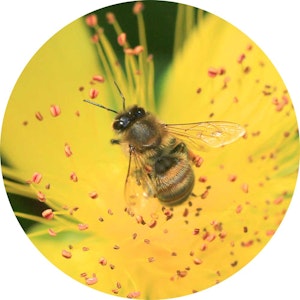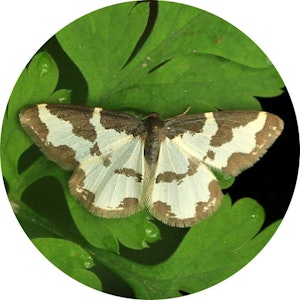Pollinators at home – family science survey
Explore and learn about the incredible natural world and contribute to the grand sum of human knowledge by taking part in this citizen science project.
Citizen science is important because professional scientists can’t always carry out large, wide spread studies, so enthusiastic volunteers like you can help fill in the gaps, and experience what it is like to be a scientist at home.
Pollinators like bees, wasps and butterflies are essential for creating and maintaining healthy habitats, eco-systems and our global food systems. But scientists have reported that pollinator numbers are falling worldwide due to changes in our global climate, habitat destruction and use of chemical pesticides.
To record pollinator numbers, habitat and diversity across Britain, CAT has teamed up with Citizen Science for Education in Sustainable Development to create an exciting pollinator survey that you can take part in at home.
You can carry out the survey as many times as you like but there are some “scientific controls” (guidelines) that make sure the data collection is fair.
Everything you need to know is explained below. Happy counting!

WHAT YOU WILL NEED
- A garden, balcony or outdoors space
- A 1m x 1m quadrat – to learn how to make your own click here
- A phone or tablet with the survey downloaded
- Pen/pencil
- Paper
- Pollinator ID sheet
- Stop watch (you can use your phone)
STEP BY STEP
1. Make a quadrat
A quadrat is a simple four-sided, square-shaped device that, when placed in nature, allows you to observe and record what is happening in a specific area. It is a really easy piece of equipment to make at home following our Make your own quadrat activity.

2. Download the survey
Using a phone or tablet download the survey by clicking here.
You can enter your results offline but you will need to reconnect to click “upload” and send your data. During your survey you can use a pen and paper (or tally sheet) to collect your data outdoors.
3. Make your tally sheet
When you’re ready to start recording it will be helpful to have a ready-made tally sheet to record which pollinators land inside your quadrat and you can have fun making one.
Down one side of a piece of paper make a list of our most common pollinators (Honeybees, Bumblebees, Common Wasps, Hoverflies, Butterflies & Moths).
Every time you spot a pollinator inside your quadrat, mark it down on your sheet next to the correct name. You could decorate your tally sheet with drawings of pollinators and wildflowers.
For a basic example of a tally sheet click here
4. Get the guide
To help you to identify each pollinator you may need a guide to help you. We have created a basic guide here or you can download a more in depth guide here.

5. Choose your spot
You are now ready to go to your outdoor space and choose your survey spot.
Everyone’s outdoor space is different; it could be a garden, back yard or balcony. It could be sunny, shady, full of plants, near trees or just have a few dandelions. Take notice of what your outdoor habitat is like, you will be recording this later in the survey.
6. 10 minute sit-spot survey
Now you’re ready to complete the survey. With your tally sheet, pen/pencil and ID guide to hand sit quietly near your quadrat (close enough to see clearly but give the visiting pollinators some room).
In 10 minutes try to record every pollinator that lands inside your quadrat (you can use a phone stopwatch to count down).
7. Pollinator photography
It can be tricky to identify lots of pollinators at once, especially when you’re just getting started so take pictures of the pollinators in your quadrat.
Try to include the habitat that the quadrat is in too. You can use your photos to ID the pollinators later and you can upload your favourite to the survey.
8. Upload your results
After 10 minutes is up reconnect to the internet and enter your data into the online survey. You will be asked some essential survey information such as the date, time, your location, what the habitat is like near your quadrat and what the weather is like today, you can also upload your favourite photo here.
You will then be able to record how many pollinators you spotted. When you’ve pressed, “upload” your results come straight to us to collate, analyse and archive.
9. Share your findings
We would love to see how you got on so share your photos and any interesting scientific discoveries with use using #pollinatorsathome.
Enews sign up
Keep up to date with all the latest activities, events and online resources by signing up to our emails and following us on social media.
